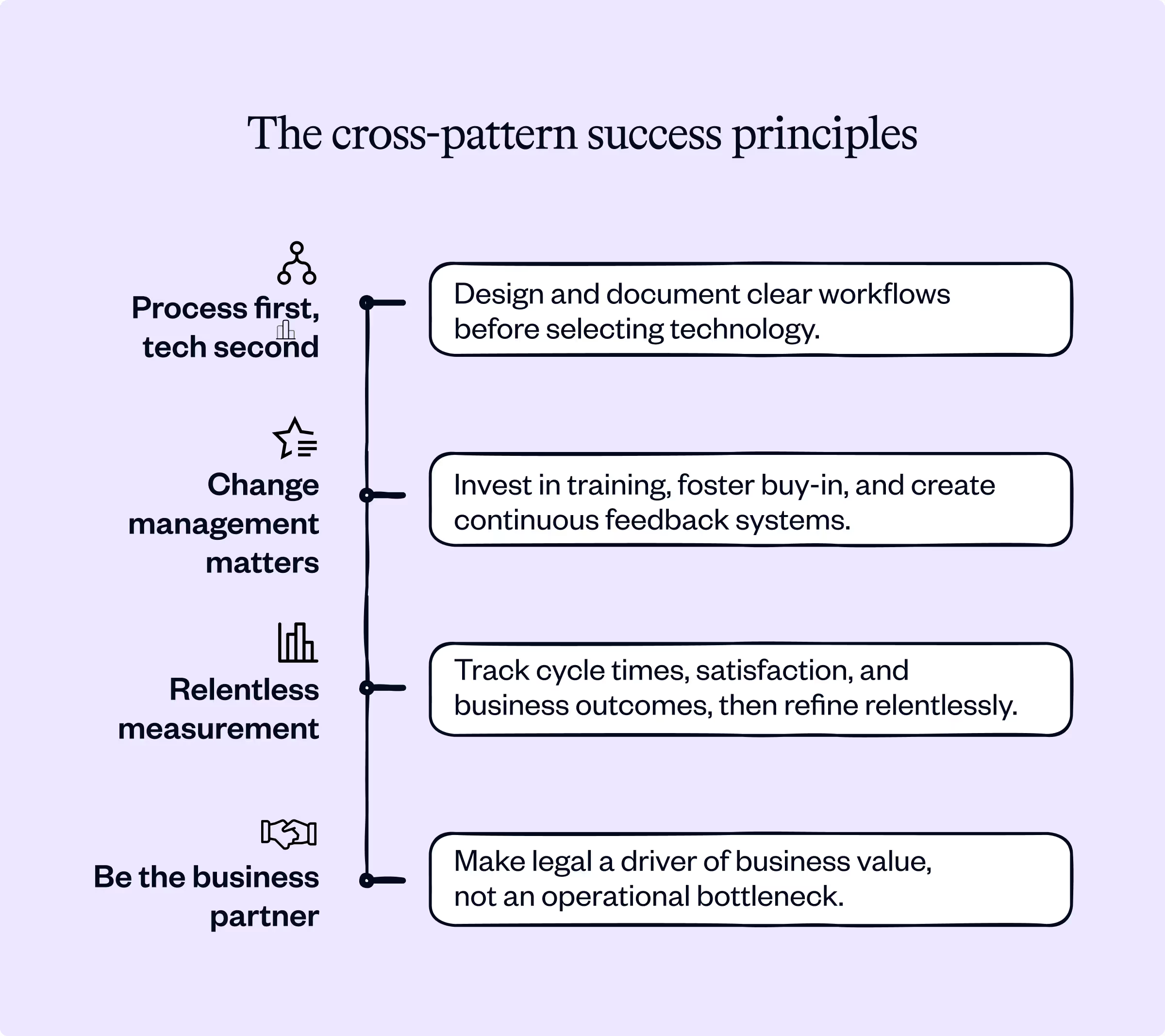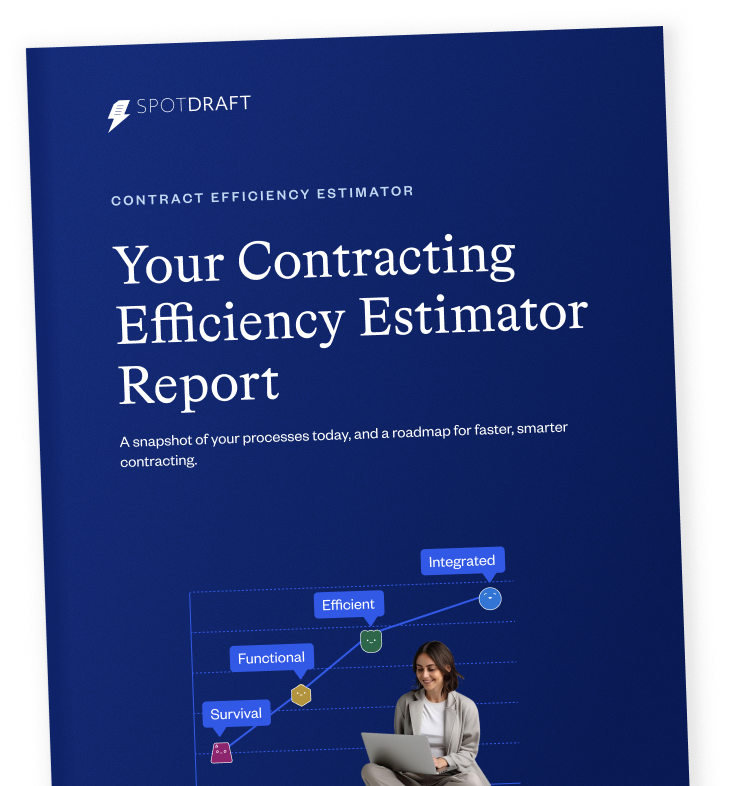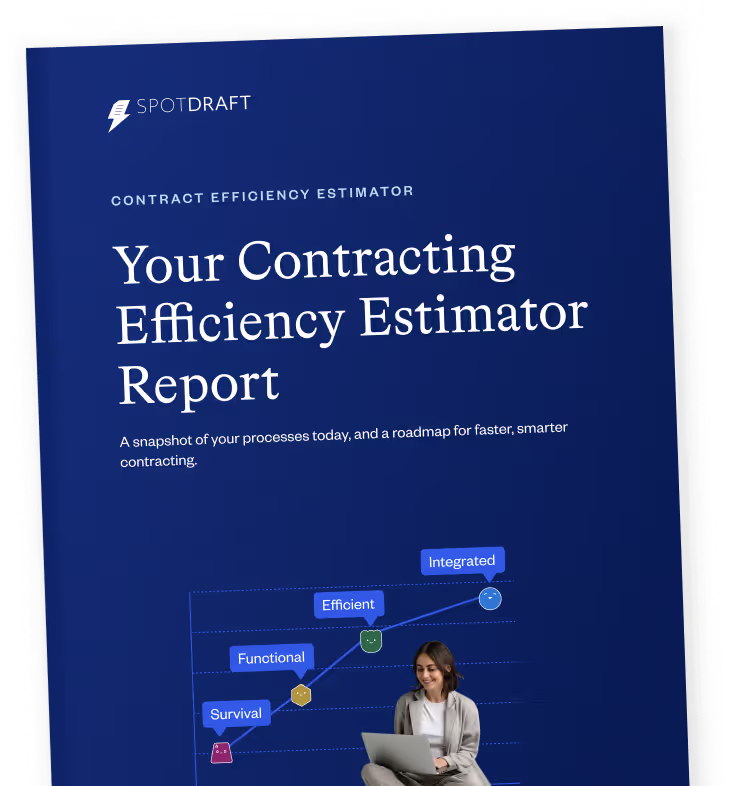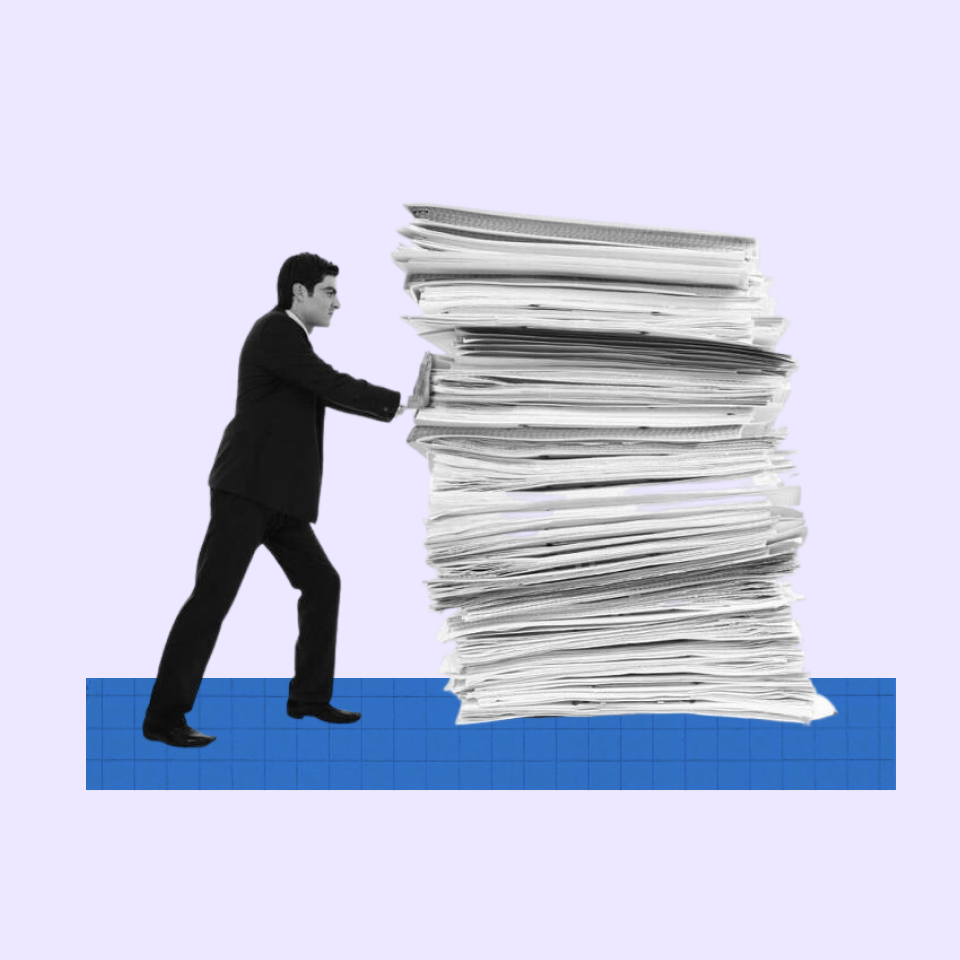Legal teams have been facing increasing pressure to deliver contracts more efficiently, effectively, and with fewer resources. But what separates organizations processing contracts in a single day from those that take a month? Our recent contracting efficiency benchmarking survey reveals clear patterns among top-performing legal teams, uncovering best practices that any organization can adopt, regardless of its current technology or team size.
Efficiency doesn’t start with having the most tech
Efficiency leaders aren’t always the ones with cutting-edge technology. In fact, some of the most successful legal teams use only basic digital tools—but beat their more “advanced” peers by focusing on ruthless process discipline:
- Standardize everything: Clear, documented workflows for every contract type; no exceptions, no shortcuts.
- Strategic stakeholder boundaries: Define exactly when legal needs to review—and when business teams can move ahead independently.
- Efficient decisions: Pre-approved contract terms and clear escalation routes eliminate hold-ups.
- Measure what matters: Constant tracking of cycle times and feedback ensures continuous improvement.
Takeaway: Simplicity and discipline often outperform unnecessary complexity. Streamlining manual processes can bring better results than expensive, poorly implemented platforms.
Balanced automation wins
Legal teams that excel don’t just throw tech at their problems—they combine moderate automation with meticulous execution:
- Selective automation: Focus tech investments on high-impact, repetitive processes but keep complex judgment calls with humans.
- Seamless integration: Sync contract processes with business systems (like CRM or procurement) to end manual data handoffs.
- User-centric approach: Invest heavily in training, support, and an ongoing feedback loop.
- Let data drive you: Use contract analytics to spot and fix workflow bottlenecks.
Bottom Line: A thoughtful blend of technology and process discipline accelerates both speed and adoption.
Pioneers make tech serve the business
Legal teams leading the charge on legal tech innovation succeed not because of feature overload, but by aligning every tech decision with core business goals:
- Business-aligned implementation: Tech choices map directly to business objectives.
- Deep system integration: Legal doesn’t sit in a silo—everything connects for real-time insight and action.
- Strategic AI use: AI is used for high-value tasks such as risk analysis and contract renewal—not just basic automation.
- Never stop improving: The best teams constantly review and optimize their tech stack based on evolving needs.
Result: These teams turn contract management into a strategic advantage, driving business value and not just checking boxes.
The cross-pattern success principles
No matter their level of automation, top legal teams share these foundational habits:

In contrast, struggling teams often expect technology alone to fix broken processes, neglect change management, ignore performance measurement, and operate in isolation from the broader business.
Final Thought:
Efficiency isn’t solely about “doing more with less”—it’s about doing the right things, in the right order, with relentless focus on process, people, and only then, technology. Any legal team can become an efficiency leader by adopting these best practices, regardless of where they start.


.avif)








